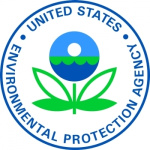- Branche: Government
- Number of terms: 11955
- Number of blossaries: 0
- Company Profile:
U.S. Environmental Protection Agency (EPA) is a federal agency responsible for the development and enforcement of regulations for human health and environment protection. The agency researches and sets standards for environmental programs and delegates. It was founded in 1970 following the proposal ...
Πρότυπα που έχουν σχεδιαστεί για τη μείωση των κινδύνων ασθένεια ή η ζημία που έχει προκύψει από χειριστές και των εργαζομένων επαγγελματικών ανοίγματα στα φυτοφάρμακα που χρησιμοποιούνται για την παραγωγή γεωργικών φυτών σε αγροκτήματα ή σε φυτώρια, θερμοκήπια και δάση και επίσης από κατά λάθος έκθεσης των εργαζομένων και των άλλων προσώπων στα εν λόγω φυτοφάρμακα. Απαιτούν πρακτικές στο χώρο εργασίας που έχει σχεδιαστεί για τη μείωση ή εξάλειψη της έκθεσης στα φυτοφάρμακα και θεσπίζει τις διαδικασίες για την αντιμετώπιση καταστάσεων έκτακτης ανάγκης που σχετίζονται με την έκθεση.
Industry:Agricultural chemicals
Το επίπεδο κάτω από την επιφάνεια του οικοπέδου στο οποίο όλα τα ανοίγματα είναι γεμισμένα με νερό.
Industry:Agricultural chemicals
Compounds containing either chlorine, bromine or fluorine and carbon. Such compounds can act as powerful greenhouse gases in the atmosphere. The chlorine and bromine containing halocarbons are also involved in the depletion of the ozone layer.
Industry:Natural environment
Number of parts of a chemical found in one billion parts of a particular gas, liquid, or solid mixture.
Industry:Natural environment
The benefits of policies that are implemented for various reasons at the same time including climate change mitigation acknowledging that most policies designed to address greenhouse gas mitigation also have other, often at least equally important, rationales (e.g., related to objectives of development, sustainability, and equity).
Industry:Natural environment
All parts (reservoirs) and fluxes of carbon. The cycle is usually thought of as four main reservoirs of carbon interconnected by pathways of exchange. The reservoirs are the atmosphere, terrestrial biosphere (usually includes freshwater systems), oceans, and sediments (includes fossil fuels). The annual movements of carbon, the carbon exchanges between reservoirs, occur because of various chemical, physical, geological, and biological processes. The ocean contains the largest pool of carbon near the surface of the Earth, but most of that pool is not involved with rapid exchange with the atmosphere.
Industry:Natural environment
Substances containing only hydrogen and carbon. Fossil fuels are made up of hydrocarbons.
Industry:Natural environment
Compounds containing hydrogen, fluorine, chlorine, and carbon atoms. Although ozone depleting substances, they are less potent at destroying stratospheric ozone than chlorofluorocarbons (CFCs). They have been introduced as temporary replacements for CFCs and are also greenhouse gases.
Industry:Natural environment
Gas or liquid fuel made from plant material (biomass). Includes wood, wood waste, wood liquors, peat, railroad ties, wood sludge, spent sulfite liquors, agricultural waste, straw, tires, fish oils, tall oil, sludge waste, waste alcohol, municipal solid waste, landfill gases, other waste, and ethanol blended into motor gasoline.
Industry:Natural environment
The IPCC was established jointly by the United Nations Environment Programme and the World Meteorological Organization in 1988. The purpose of the IPCC is to assess information in the scientific and technical literature related to all significant components of the issue of climate change. The IPCC draws upon hundreds of the world's expert scientists as authors and thousands as expert reviewers. Leading experts on climate change and environmental, social, and economic sciences from some 60 nations have helped the IPCC to prepare periodic assessments of the scientific underpinnings for understanding global climate change and its consequences. With its capacity for reporting on climate change, its consequences, and the viability of adaptation and mitigation measures, the IPCC is also looked to as the official advisory body to the world's governments on the state of the science of the climate change issue. For example, the IPCC organized the development of internationally accepted methods for conducting national greenhouse gas emission inventories.
Industry:Natural environment
